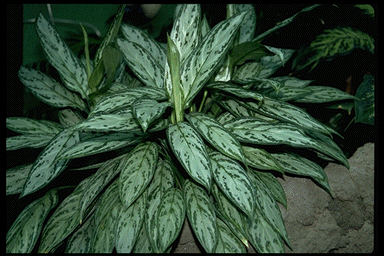|
THE JKL HERBAL /SUPPLEMENT REFERENCE GUIDE |
|
||||||
|
|||||||
Reprinted with permission from the book From Magic
to Medicine
Alphabetical Herb List
ECHINACEA (Echinacea angustofolia purpurea)Few plants are as potentially beneficial at boosting the immune system as Echinacea (also called coneflower). The parts of the plant that are used for medicinal purposes are the leaves and the roots.
Originally it was the primary medicine of the North American Plains Indians´. They used it in the form of a poultice to treat insect bites and wounds. They employed it to prevent infections by drinking Echinacea tea. But even though America forgot Echinacea, the Europeans have been enjoying its benefits since the 1930's. Numerous studies attested to its extraordinary curative properties. German studies support it´s traditional uses for fighting flu, tonsillitis, bronchitis, colds, meningitis, tuberculosis, psoriasis, ear infections and whooping cough. Echinacea contains a natural antibiotic called echinaciside, which is similar to penicillin in its broad spectrum of activity. It kills a variety of disease-causing agents like bacteria, virus, fungi and protozoa. It does so by fortifying tissues against attack by these invading organisms. A study published in Infection and Immunology demonstrated that a substance in Echinacea boosts the ability of the immune system to annihilate germs. And yet another study at the University of Munich demonstrated that extracts of the herb boosted infection-fighting T-cells of the body by up to 30% more than other immune fighting drugs. Even yeast infections respond to Echinacea. In a recent study 203 females with recurrent yeast infections were treated with either an anti-yeast ointment or the anti-yeast ointment plus an oral preparation of Echinacea. Following six months, 60% of the women who received the anti-yeast ointment had recurrences. However, only 17% of those who were also treated with the herb experienced a recurrence. It is also helpful for snakebite and colic. DOSAGE: Echinacea is best when taken at the early onset of a cold or flu. To prevent infection ... 1) Make a tea by putting 2 teaspoons of Echinacea root in a cup of water and bring to a boil. Let it simmer for 10-15 minutes and drink three times a day ... 2) As a liquid tincture, 30 drops (can be put in water) 3-4 times a day ... 3) Take two 450-mg Echinacea root capsules three times a day at the first sign of a cold, sore throat, or flu. People with chronic respiratory problems who have "tried everything" have found relief from Echinacea. German researchers even used the root to successfully treat rheumatoid arthritis. You can grow your own Echinacea. It is an attractive perennial which thrives in slightly acidic soil and produces big purple, yellow or white flowers all summer long. You can plant them in the fall and leave them until they germinate in the spring. You can also put the seeds in the freezer for a month or two and then sow them very shallowly in the spring. CAUTION: Avoid if you are allergic to sunflowers. People with an autoimmune system abnormalities like type I diabetes, multiple sclerosis, rheumatoid arthritis AIDS, HIV infection, tuberculosis should not take without consulting their doctor. Should not be taken more than 10-14 days at a time.
A strong stimulant of the central nervous system due to the chemical ephedrine contained in the stem and branches. Quickly dilates bronchial tubes and stimulates the heart. Ephedra has stimulating effects, which are stronger than caffeine To use as a tincture ... 1/4 to ½ teaspoon up to three times daily. CAUTION: Side effects can include increased heart palpitations and increased blood pressure. Long term use could weaken the adrenal glands.
A tea made from this tree has been shown to clear nasal passages due to the chemical eucalyptol that can be found in Listerine, Vicks VapoRub, Dristan Spray and Hall´s Cough Suppressants. Australian natives have used it to treat fever, asthma, and coughs. Europeans used it to sterilize medical instruments. To use it, add 1 to 2 teaspoons of dried-crushed leaves to a cup of boiling water ... steep for 10 minutes. Drink no more than 2 cups a day. Also, a few drops of the oil can be added to boiling water and then used as an inhalant. For wounds simply clean the minor infected area and apply a drop or 2 of the oil or a handful of clean crushed leaves. You can also ease muscle soreness with ointments made from eucalyptus because it increases blood flow to muscle tissues. Place a few drops of essential oil onto a cloth and inhale deeply to clear air passages due to asthma. CAUTION: Never ingest eucalyptus oil because it is poisonous when taken internally. Teas are made only from the leaves. Do not give to children under the age of 2.
Helps to reduce ... high blood pressure, weight, skin disorders, arthritis, alcoholism, and feminine disorders (like hot flashes, cramps and heavy bleeding). DOSAGE: An adult dosage would be 1000 to 3000 mg daily. CAUTION: Oil capsules should be taken with food to prevent nausea. Rare side effects include headaches, diarrhea and nausea. People with epilepsy or taking blood thinning medications should consult their health care provider prior to use.
Also the herb is used to treat jaundice, loss of memory, and vertigo. Is used for weak eyesight.
Eyebright is used in the form of a tea, lotion, infusion or capsule. Used for eyestrain, eye inflammation, other eye ailments, and problems with the mucous membranes. Internally, it cleans the blood supply to the eyes.
|
